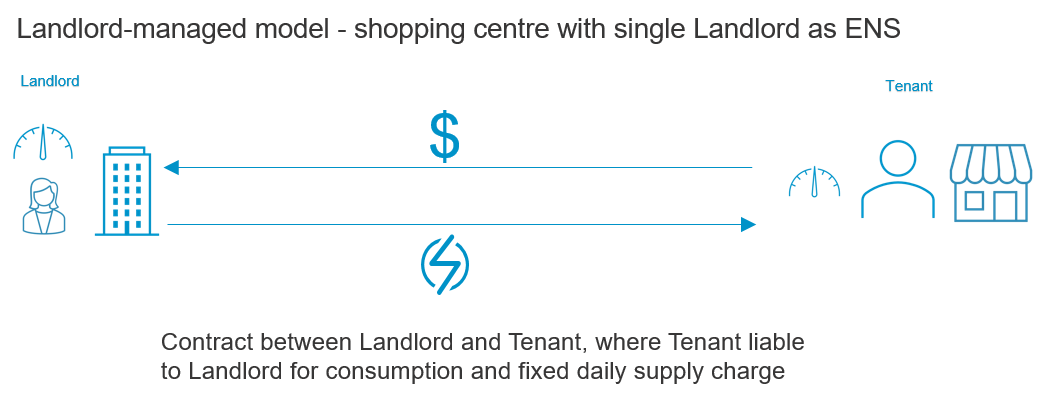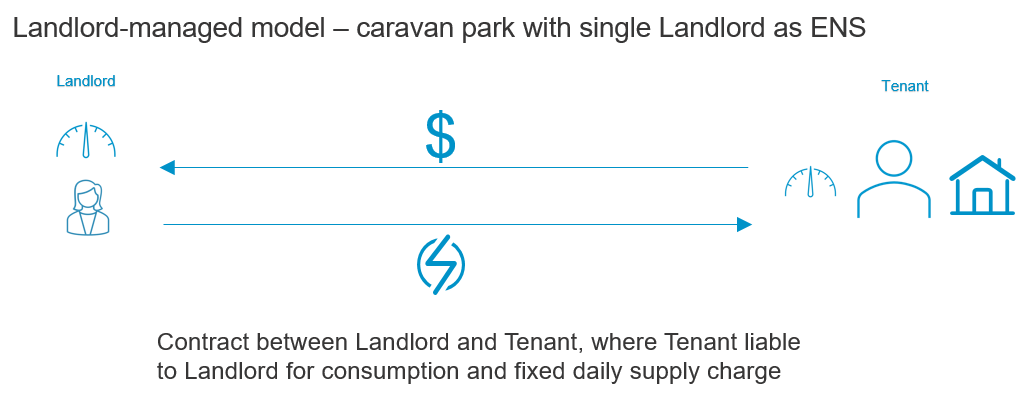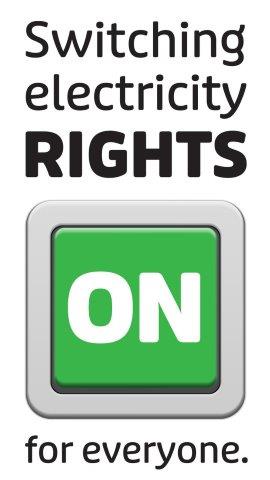These case studies are examples of typical business models that Energy Policy WA understands are being used in embedded networks in Western Australia, and that may fall under the Voluntary Embedded Networks Code of Practice. They are not representative of all business models used and are not to be relied on to understand how any specific embedded network is operated.
Example 1A - Shopping centre wholly owned by landlord
The owner of a shopping centre leases the shops within it to commercial tenants under the Commercial Tenancy (Retail Shops) Act 1985.
The shopping centre owner (landlord) owns and manages the embedded network infrastructure (internal wiring, meters, and any distributed energy resources such as solar, batteries and/or electric vehicle chargers). This includes maintaining contracts with third parties for maintenance, on-site electrical work and periodic meter readings.
The shopping centre owner (landlord) procures electricity from the main grid at the master meter(s) for the shopping centre and is responsible for on-selling electricity to tenants within the shopping centre. It sets the electricity prices paid by tenants by reference to Synergy’s regulated tariffs for commercial customers.
Tenants also contribute to common area electricity costs via variable outgoings under their respective lease contracts.
Who should register as the ENS under the Voluntary Embedded Networks Code?
The shopping centre owner (landlord) should register as the embedded network seller (ENS).
Why?
The shopping centre owner (landlord):
- holds the contract to purchase electricity at the master meter for the embedded network;
- has control over prices paid for electricity by tenants; and
- manages all aspects of the embedded network operation itself.
If the shopping centre owner (landlord) engages third party agents to perform any role associated with the operation of the embedded network (e.g. meter reading or issuing bills), it must ensure that those contracts allow the shopping centre owner (landlord) to fulfil its obligations.
Example 1B - Caravan park wholly owned by landlord
The owner of a caravan park has some long stay tenants and supplies those tenants with electricity through an embedded network.
The caravan park owner (landlord) owns and manages the embedded network infrastructure, including organising third parties to undertake on-site electrical work when required.
The caravan park owner (landlord) procures electricity from a retailer at the master meter and apportions electricity costs to long stay tenants based on:
- a meter reading (if sub-metered); or
- an allocation methodology (if no sub-meters).
The caravan park owner (landlord) sets electricity prices paid by long stay tenants by reference to Synergy’s regulated residential tariff.
Who should register as the ENS under the Voluntary Embedded Networks Code?
The caravan park owner (landlord) should register as the ENS.
Why?
The caravan park owner (landlord):
- holds the contract to purchase electricity at the master meter for the embedded network;
- has control over prices paid for electricity by long stay tenants and, if applicable, determines the allocation methodology of electricity costs amongst tenants (if no sub-meters); and
- manages all aspects of the embedded network operation itself.
If the caravan park owner (landlord) engages third party agents to perform any role associated with the operation of the embedded network (e.g. meter reading or issuing bills), it must ensure that those contracts allow the caravan park owner (landlord) to fulfil its obligations.





